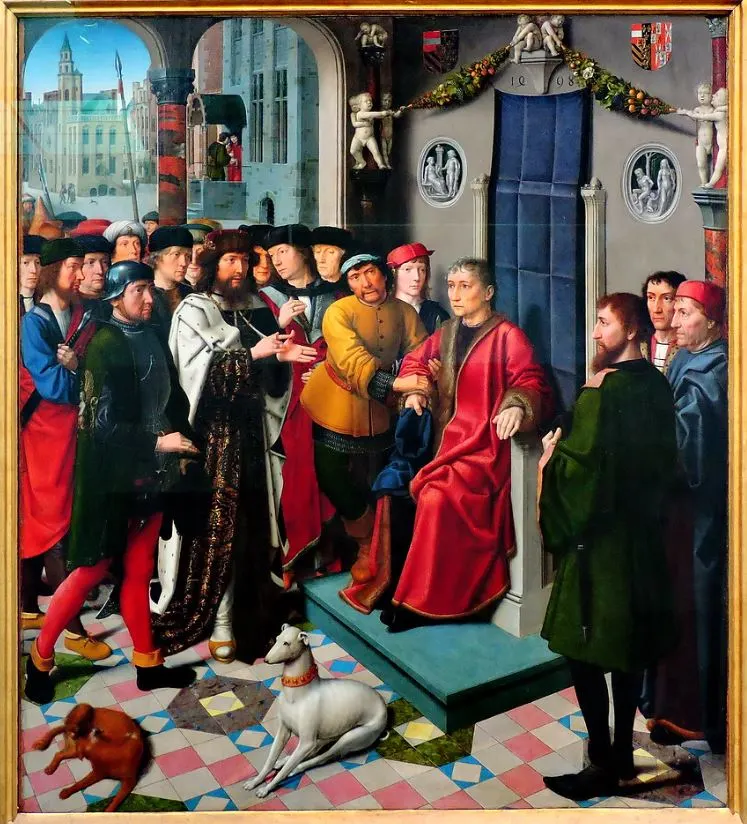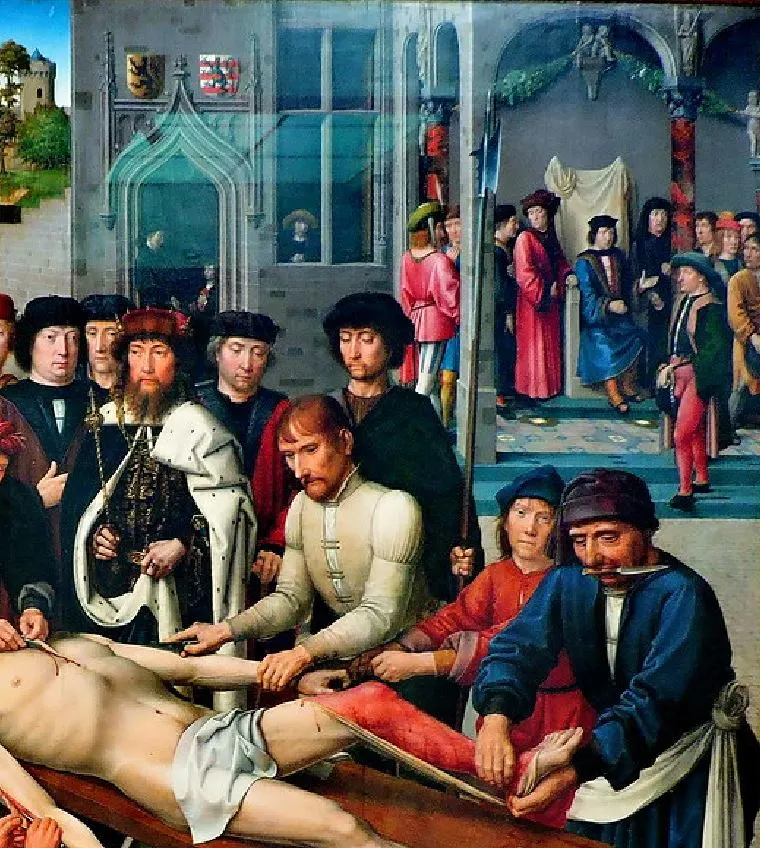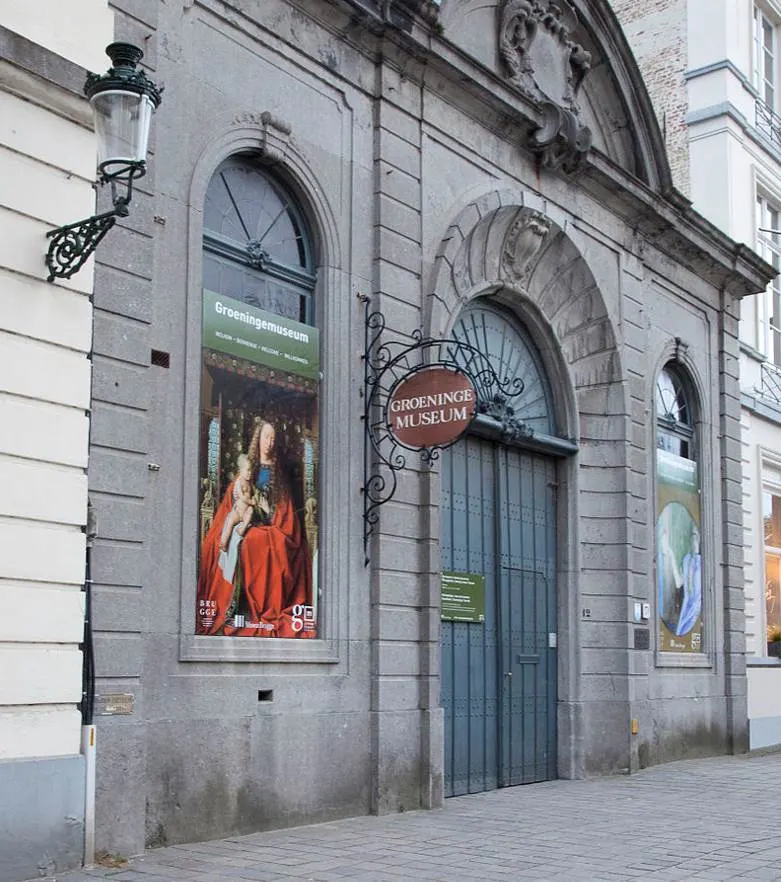What would be a great deterrent for government officials to restrain from being corrupt during their tenure?
This was something that the officials of Bruges thought about when they commissioned a scary painting that was hung inside the city’s town hall.
Gerard David (1460-1523) was the Early Netherlandish painter who completed this remarkable work of art, and it’s fair to conclude that he did a pretty good job for its intended purpose.
In this article, you’ll discover some of the most interesting facts about The Judgement of Cambyses by Gerard David, a fascinating Early Netherlandisch painting for several reasons.
1. It was completed a few years after the painter moved to Bruges in the 1480s
Little is known about the early life of Gerard David apart from the fact that he was born in a village called Oudewater near Utrecht in the modern-day Netherlands.
The exact date of his birth is unknown but based on a self-portrait completed in 1509, art historians estimate that he was born around 1450-1460.
Based on his style, it’s very likely that he traveled to Italy in the 1470s or 1480s. His paintings show a clear influence from Italian Renaissance artists.
He moved to Bruges in 1483 with a bag of experience and joined the local Guild of Saint Luke in 1484. He lived in the city until his death in 1523 and was buried inside the Church of Our Lady in Bruges.
He completed The Judgement of Cambyses in 1488, just a few years after he arrived in Bruges.

2. The diptych depicts the arrest and execution of a corrupt Persian judge

David’s painting is a diptych which means that it consists of two oak panels. The left one depicts the arrest of Sisamnes and the right shows his flaying.
Sisamnes was a corrupt judge in the Persian Empire during the rule of Cambyses II, the son of Cyrus the Great who ruled during the 6th century B.C.
This king of the Achaemenid Empire, also known as the First Persian Empire in modern-day Iran, wasn’t fond of corruption and he wanted to make an example of Sisamnes.
The story was told by Herodotus (484-425 B.C.), a Greek historian who lived during the following century.

The scene of the flaying of Sisamnes, while the man was still alive, is quite a gruesome scene to behold.
That’s exactly why the local authorities commissioned this work. This topic was chosen to remind local judges to be fair and uncorrupted.
The painting was hung in the deputy burgomaster’s room, the space held by the assistant of the local mayor, in the town hall of Bruges.
It must have served this purpose perfectly, don’t you think?

4. The painting briefly served another purpose during the year 1488
The left panel depicts the moment that Sisamnes, who sits on his throne, was arrested after accepting a bribe that influenced one of his judgements.
The painting was completed in 1488, the year that Maximilian I, Holy Roman Emperor (1459-1519) was held as a prisoner at the Cranenburg House at the market of Bruges.
The burghers of Bruges, the powerful elite in this medieval city, originally used this house to watch games from the windows.
They later apologized to Maximilian I for this 4-week-long imprisonment and they used the left panel of the painting to express this sentiment.

5. There’s a scary detail in the top right corner of the right panel
Because Herodotus lived at a time when the story was still quite recent, the horrific event depicted in The Judgement of Cambyses certainly happened.
The story didn’t end with the flaying, though, because according to the Greek writer, the king ordered his skin to be cut into leather strips which were then used to decorate his chair.
To make things worse, Cambyses then appointed Otanes, the son of the deceased judge, as his successor. Yes, his son had to sit on the processed skin of his own dead father.
The story written by Latin author Valerius Maximus in the 1st century A.D. slightly deviates from this because according to him, the skin was stretched so it could drape the entire chair.
As you can see in the top right corner of the right panel, Otanes sits on this horror chair. The coats of arms on the building are those of Flanders and Bruges.

6. David’s painting was the first of many paintings on this subject in art history
The subject of this painting became quite popular in Northern Europe, and that’s because Gerard David’s masterpiece was the first and so it served as a great example.
Many variations of this work were completed during the following centuries, including a remarkable work of art by Peter Paul Rubens.
His version, part of the collection of Sanssouci Palace in Potsdam, Germany, depicts the aftermath of the story as you can see Otanes sitting on the chair draped with the skin of his executed father Sisamnes.

7. How big is The Judgement of Cambyses by Gerard David?
The painting was commissioned to scare local judges in Bruges so it couldn’t be too small to have the desired effect.
The Judgement of Cambyses (1488) by Gerard David is an oil on oak panel diptych painting that has dimensions of 202 × 349.5 centimeters (80 × 137.6 inches).

8. Where is Gerard David’s masterpiece located today?
If you want to admire David’s fascinating painting, then you have to visit the city where it was commissioned in the late 15th century.
It’s part of the collection of the Groeningemuseum in Bruges, a museum that also features masterpieces of David’s colleagues such as Jan van Eyck and Hieronymus Bosch.

